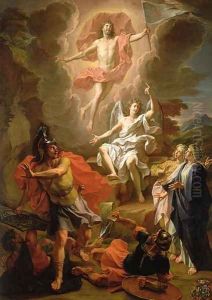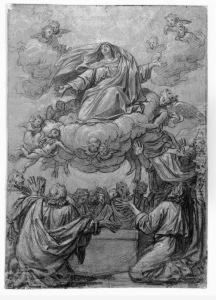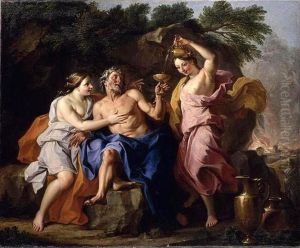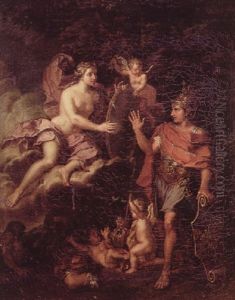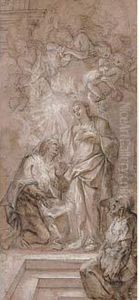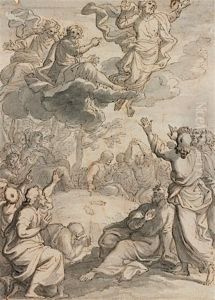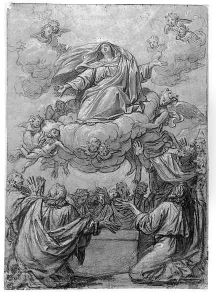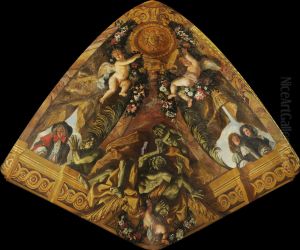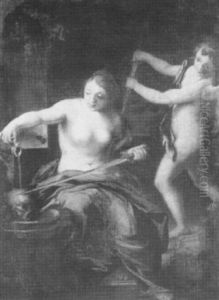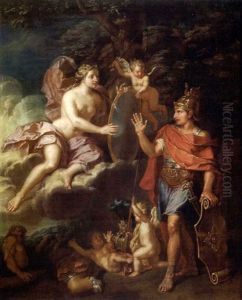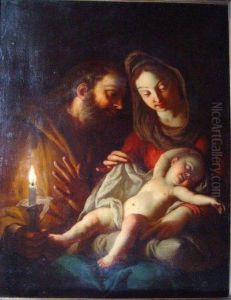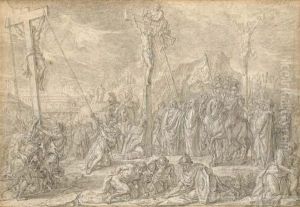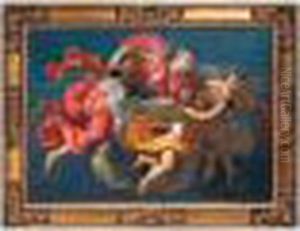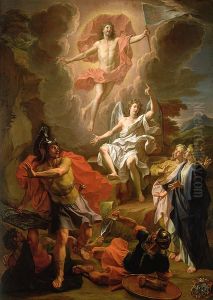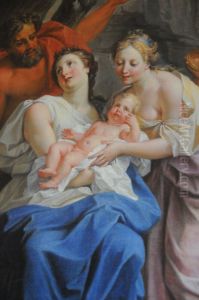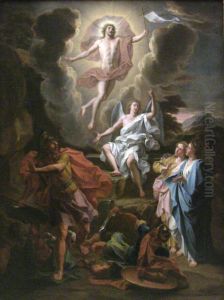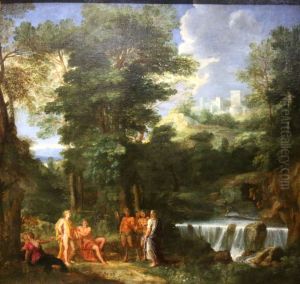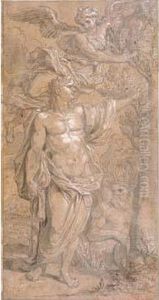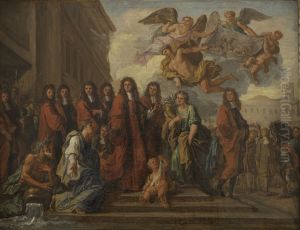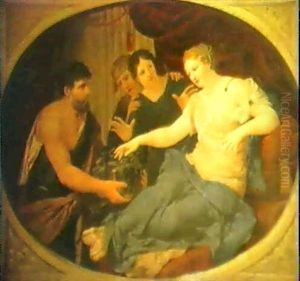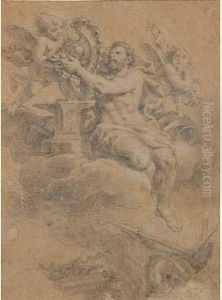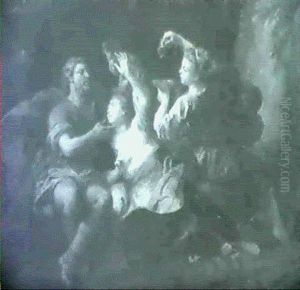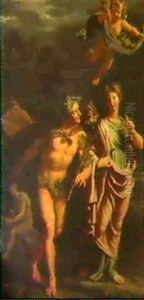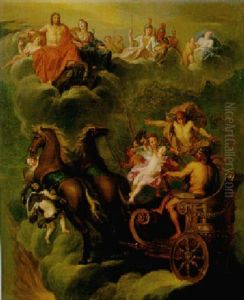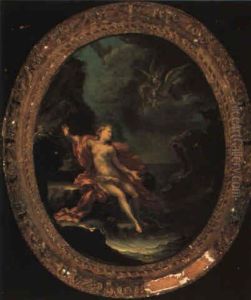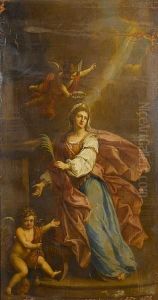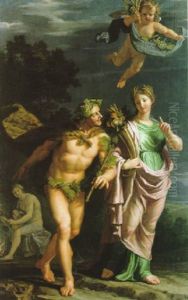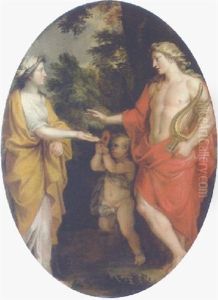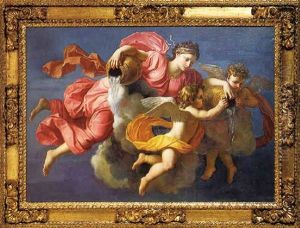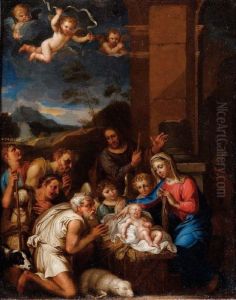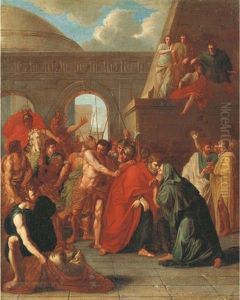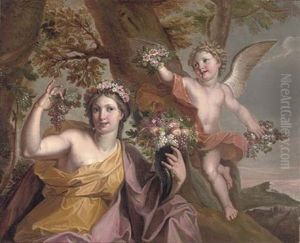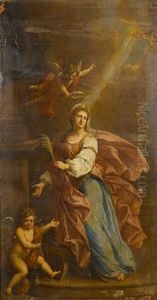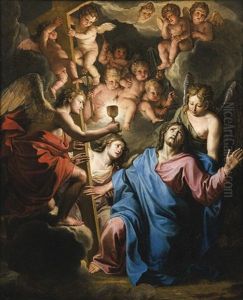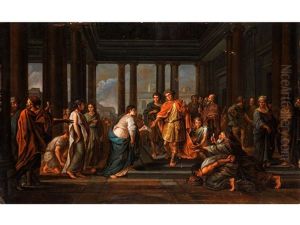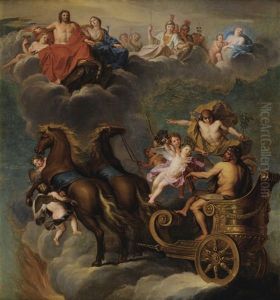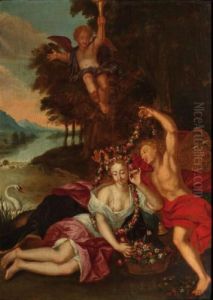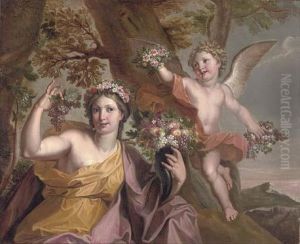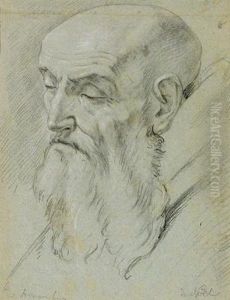Noel Coypel Paintings
Noël Coypel was a distinguished French painter of the Baroque era, known for his classical style and prolific output that contributed significantly to the French art scene in the late 17th century. Born on December 25, 1628, in Paris, France, Coypel came from a family with strong artistic roots. His father, also an artist, was instrumental in nurturing his early interest in painting.
Coypel's artistic journey began under the guidance of his father, but he soon sought to expand his horizons by studying under other prominent artists of the time. His talent was evident early on, and he was admitted to the Royal Academy of Painting and Sculpture in Paris, where he honed his skills and embraced the Baroque aesthetic, characterized by dramatic expression, rich colors, and grandeur.
Throughout his career, Coypel received numerous commissions from the French court, which was a testament to his skill and the high regard in which he was held. He was involved in several significant projects, including decorations for the Palace of Versailles, one of the most prestigious assignments for an artist at that time. His works often depicted scenes from the Bible, mythology, and history, imbued with a sense of movement and emotional intensity typical of the Baroque style.
In 1663, Coypel was appointed the director of the French Academy in Rome, a position that not only recognized his contributions to the arts but also allowed him to influence the next generation of artists. His tenure in Rome was marked by a deep engagement with the classical tradition, and he encouraged his students to study the works of the Renaissance and ancient art, believing that a strong foundation in the classics was essential for any artist.
After returning to France, Coypel continued to work prolifically, creating altarpieces, portraits, and large-scale decorative works. His style evolved over time, incorporating elements of the emerging Rococo style towards the end of his career, though he always remained true to his Baroque roots.
Noël Coypel's legacy is not just in the works he left behind but also in his influence on French art and his role in bridging the Baroque and Rococo styles. He died on December 24, 1707, just one day shy of his 79th birthday, leaving behind a body of work that continues to be celebrated for its beauty and historical significance.
